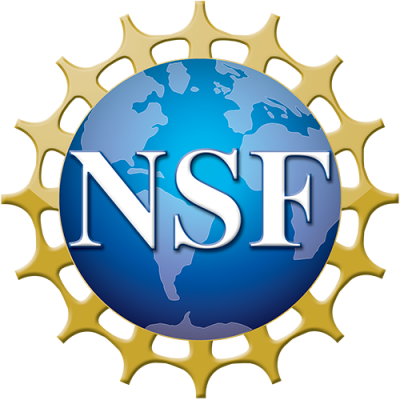November 11th, 2019 - Morning
Title: Spectrum Sharing in the 5G & Beyond Era
Dr. Nada Golmie, Chief- Wireless Networks Division, National Institute of Standards and Technology (NIST)
Abstract:
Spectrum sharing has always been an integral design criterion of wireless systems. Spectrum resources were either carefully coordinated in the case of licensed operation or available to all for unlicensed operation. In this latter regime, some level of interference had to be tolerated and coexistence mechanisms had to be put in place. The spectrum scarcity in today’s hyperconnected world is fueling further innovation in how to manage spectrum resources more dynamically and perhaps more efficiently. In this talk, we present some emerging sharing examples in the 5G landscape today and scenarios of interest in both the sub-6 GHz and the millimeter-wave bands. We discuss measurement-based building blocks to enable dynamic system collaboration and more effective sharing techniques.
Bio:
 NADA GOLMIE (nada@nist.gov) received her Ph.D. in computer science from the University of Maryland at College Park. Since 1993, she has been a research engineer at the National Institute of Standards and Technology. She is currently the chief of the wireless networks division in the Communications Technology Laboratory. Her research in media access control and protocols for wireless networks led to over 100 technical papers presented at professional conferences, journals, and contributed to international standard organizations and industry led consortia. She is the author of “Coexistence in Wireless Networks: Challenges and System-level Solutions in the Unlicensed Bands," published by Cambridge University Press (2006). She leads several projects related to the modeling and evaluation of future generation wireless systems and protocols and serves as a co-chair for the 5G mmWave Channel Model Alliance.
NADA GOLMIE (nada@nist.gov) received her Ph.D. in computer science from the University of Maryland at College Park. Since 1993, she has been a research engineer at the National Institute of Standards and Technology. She is currently the chief of the wireless networks division in the Communications Technology Laboratory. Her research in media access control and protocols for wireless networks led to over 100 technical papers presented at professional conferences, journals, and contributed to international standard organizations and industry led consortia. She is the author of “Coexistence in Wireless Networks: Challenges and System-level Solutions in the Unlicensed Bands," published by Cambridge University Press (2006). She leads several projects related to the modeling and evaluation of future generation wireless systems and protocols and serves as a co-chair for the 5G mmWave Channel Model Alliance.
November 11th, 2019 - Afternoon
Title: Learning at the Wireless Edge
Dr. Vincent Poor, Michael Henry Strater University Professor, Princeton University
Abstract:
Wireless networks can be used as platforms for machine learning, taking advantage of the fact that data is often collected at the edges of the network, and also mitigating the latency and privacy concerns that backhauling data to the cloud would entail. This talk will present an overview of some results on distributed learning at the edges of wireless networks, in which machine learning algorithms interact with the physical limitations of the wireless medium. A particular focus of the talk will be on federated learning in which end-user devices interact with edge devices such as access points to implement joint learning algorithms, and for which spectrum scheduling is a key issue. Other aspects of distributed learning will also be discussed, as time permits.
Bio:
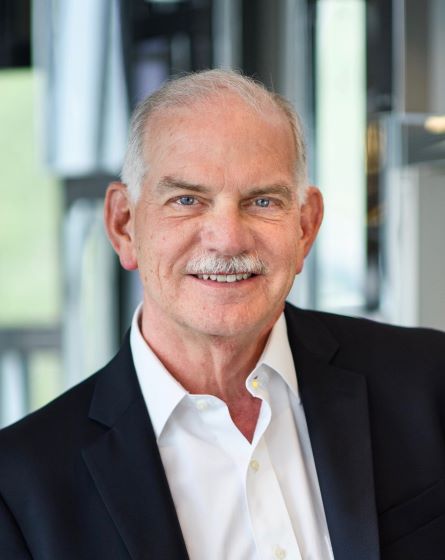 H. Vincent Poor is the Michael Henry Strater University Professor at Princeton University, where his interests include information and signal processing, and their applications in wireless networks, energy systems, and related areas. He is a member of U.S. National Academy of Engineering and U.S. National Academy of Sciences, and also a foreign member of the Chinese Academy of Sciences, the Royal Society and other national and international academies. Recent recognition of his work includes the 2017 IEEE Alexander Graham Bell Medal, the 2019 ASEE Benjamin Garver Lamme Award, and honorary doctorates from Syracuse University in 2017 and the University of Waterloo in 2019.
H. Vincent Poor is the Michael Henry Strater University Professor at Princeton University, where his interests include information and signal processing, and their applications in wireless networks, energy systems, and related areas. He is a member of U.S. National Academy of Engineering and U.S. National Academy of Sciences, and also a foreign member of the Chinese Academy of Sciences, the Royal Society and other national and international academies. Recent recognition of his work includes the 2017 IEEE Alexander Graham Bell Medal, the 2019 ASEE Benjamin Garver Lamme Award, and honorary doctorates from Syracuse University in 2017 and the University of Waterloo in 2019.
November 12th, 2019 - Morning
Title: A Vision towards Pervasive Edge Computing
Dr. Yuanyuan Yang, IEEE Fellow, Program Director, US National Science Foundation (NSF), SUNY Distinguished Professor, Stony Brook University, USA
Abstract:
This talk presents an emerging pervasive edge computing paradigm where heterogeneous edge devices (e.g., smartphones, tablets, IoT and vehicles) can collaborate to sense, process data and create many novel applications at network edge. We propose a data centric design where data become self-sufficient entities that are stored, referenced independently from their producers. This enables us to design efficient and robust data discovery, retrieval and caching mechanisms. The future research agenda including scalable data discovery, cache management, autonomous processing, trust, security and privacy, incentives and semantic data naming) will be discussed.
Bio:
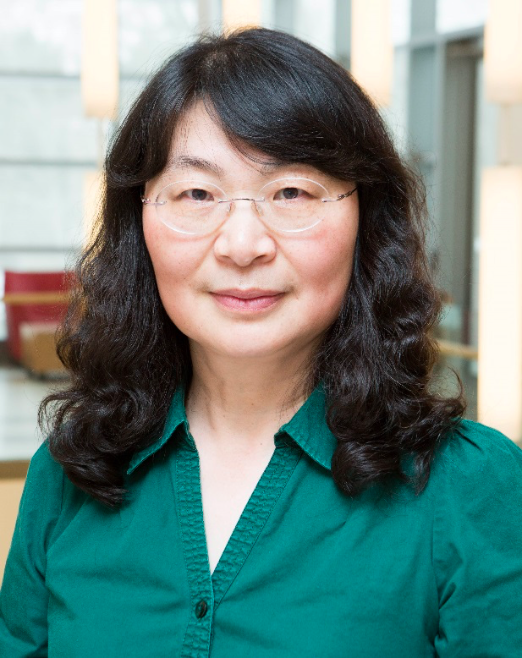 Yuanyuan Yang received the BEng and MS degrees in computer science and engineering from Tsinghua University, Beijing, China, and the MSE and PhD degrees in computer science from Johns Hopkins University, Baltimore, Maryland, USA. She is a SUNY Distinguished Professor in the Department of Electrical & Computer Engineering and Department of Computer Science at Stony Brook University, New York, USA. She is currently on leave serving as a Program Director at the US National Science Foundation. She has served as the Associate Dean for Academic Affairs of College of Engineering and Applied Sciences at Stony Brook University and a Division Director of New York State Center of Excellence in Wireless and Information Technology.
Yuanyuan Yang received the BEng and MS degrees in computer science and engineering from Tsinghua University, Beijing, China, and the MSE and PhD degrees in computer science from Johns Hopkins University, Baltimore, Maryland, USA. She is a SUNY Distinguished Professor in the Department of Electrical & Computer Engineering and Department of Computer Science at Stony Brook University, New York, USA. She is currently on leave serving as a Program Director at the US National Science Foundation. She has served as the Associate Dean for Academic Affairs of College of Engineering and Applied Sciences at Stony Brook University and a Division Director of New York State Center of Excellence in Wireless and Information Technology.
Dr. Yang is internationally recognized for her contributions in parallel & distributed computing systems and networking. She was named an IEEE Fellow in 2009 for contributions to the area. Her current research interests include cloud computing, edge computing and mobile computing. Her research group currently develops data center architectures and virtual machine placement algorithms in cloud computing systems, data discovery/retrieval/caching mechanisms in edge computing systems, and wireless energy-charging algorithms and mobile data gathering mechanisms in wireless rechargeable sensor networks.
Dr. Yang is currently the Associate Editor-in-Chief for IEEE Transactions on Cloud Computing and an Associate Editor for ACM Computing Surveys. She has served as the Associated Editor-in-Chief for IEEE Transactions on Computers, and an Associated Editor for IEEE Transactions on Computers and IEEE Transactions on Parallel and Distributed Systems. She has published over 400 scientific papers in leading refereed journals and conferences.
She is an inventor/co-inventor of seven U.S. patents in the area of interconnection networks. She has served as a distinguished visitor of IEEE Computer Society. She received an IEEE Region 1 Award in 2002, the Best Paper Awards at the 18th IEEE International Parallel and Distributed Processing Symposium in 2004, and the 7th International Conference on Parallel and Distributed Systems in 2000, a Distinguished Leadership Award from the 15th IEEE International Conference on Computer Communications and Networks in 2006 and four Best Paper Runner-up Awards. She has served as a general chair, program chair or vice chair for several major conferences and a program committee member for numerous conferences. She will be the Program Chair for 2020 IEEE IPDPS. Her research has been supported by a number of research grants from the National Science Foundation and the Army Research Office. Her home page is at www.ece.stonybrook.edu/~yang.
November 12th, 2019 - Afternoon
Title: 5G E2E network for the future of industrial automation
Dr. Peter Vetter, Head of Access Research Labs, Nokia Bell Labs
Abstract:
It is generally recognized that 5G will be a key to enable critical communication for Industry 4.0 Through a combination of Bell Labs research and extensive analysis of trends we predict that in the next five to ten years, there will be a technological revolution in which a new digital fabric will be created that augments our intelligence and enables the automation of every mundane task and the intelligent assistance of every complex task. This requires not only innovations on the radio access network, like ultra reliable low latency, localization capabilities, and creative use of new spectrum. It also requires a novel end-to-end Future X Network.
Bio:
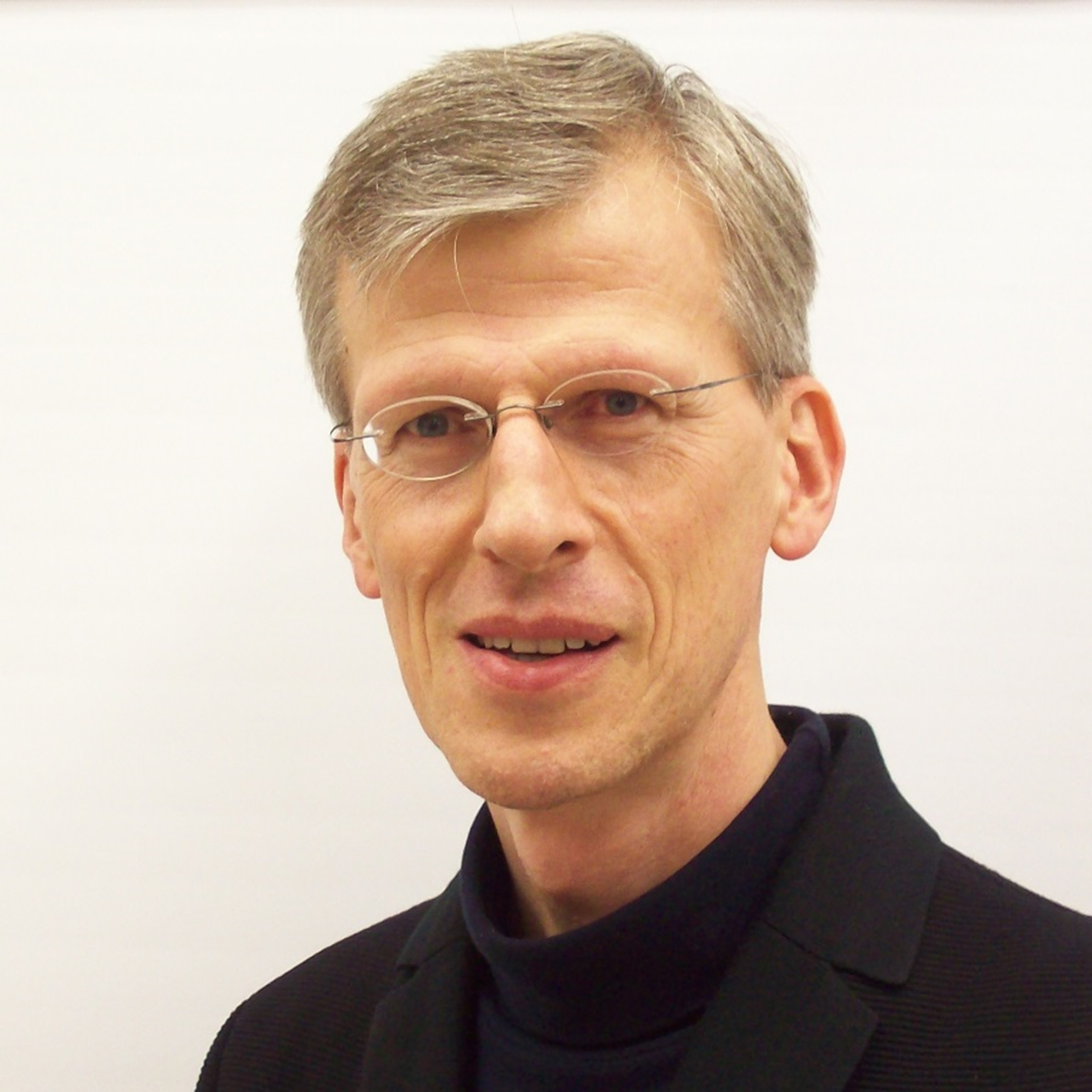 Peter Vetter is Head of the A-Lab (Access research lab) at Nokia Bell Labs and Bell Labs Fellow. He is leading an eminent global team with the mission to invent game changing innovations that define the future of mobile and fixed access. Under his leadership, he and his teams have realized several world-first system demonstrations in access and successfully transferred industry leading concepts into product. He was also co-founder of an internal venture that produced the first FTTH product in Alcatel. He received the degree of Physics Engineer from Gent University (Belgium) in 1986 and a PhD with Prof. H. Pauwels in 1991. After a post-doctoral fellowship with Prof. T. Uchida at Tohoku University (Japan), he joined the research center of Alcatel (now Nokia) in Antwerp in 1993. Since 2009, he has worked at Bell Labs in Murray Hill, New Jersey, and has been on the senior leadership team of Bell Labs since 2013. He has authored or co-authored over a hundred international papers, including invited keynotes and tutorials.
Peter Vetter is Head of the A-Lab (Access research lab) at Nokia Bell Labs and Bell Labs Fellow. He is leading an eminent global team with the mission to invent game changing innovations that define the future of mobile and fixed access. Under his leadership, he and his teams have realized several world-first system demonstrations in access and successfully transferred industry leading concepts into product. He was also co-founder of an internal venture that produced the first FTTH product in Alcatel. He received the degree of Physics Engineer from Gent University (Belgium) in 1986 and a PhD with Prof. H. Pauwels in 1991. After a post-doctoral fellowship with Prof. T. Uchida at Tohoku University (Japan), he joined the research center of Alcatel (now Nokia) in Antwerp in 1993. Since 2009, he has worked at Bell Labs in Murray Hill, New Jersey, and has been on the senior leadership team of Bell Labs since 2013. He has authored or co-authored over a hundred international papers, including invited keynotes and tutorials.
November 13th, 2019 - Morning
Title: Hardware and Software Technology for Advanced Spectrum Operations
Dr. Tom Rondeau, Program Director, Microsystems Technology Office (MTO), Defense Advanced Research Projects Agency (DARPA)
Abstract:
Information is the enabler and core concept behind much of today’s technology. At the strategic level in the military, information dissemination drives sentiment within populations, decision making for operations, intelligence gathering and processing. At the tactical level, all electronic sensing (including radar), countermeasures, and communications are all based on processing of information. Control, protection, and trust of information therefore underpins the ability to compete and win conflicts. More so, information drives good decision making and enables operating from a position of power and confidence.
Almost all information is transmitted using the electromagnetic (EM) spectrum (EMS). Most long-distance, military, and public media utilizes the parts of the EMS known as radio frequencies (RF), such as over internet channels, mobile telephone systems, TV broadcasts, satellites, and tactical or first responder networks.
The use of RF for communication is about 120 years old evolving from Hertz’s original experiment in Karlsruhe, Germany and the Marconi patents on wireless telegraphy. Today, much of the spectrum is used for TV, handheld radios (e.g., mobile phones and tactical military systems), and satellite communications. Each of these, and especially the latter two, play a significant role in DoD operations.
As usage and congestion of spectrum increase in both the commercial and defense technologies, so too has the capabilities of the hardware and software used to access, command, and control that spectrum. This talk will focus on a few DARPA programs creating new hardware to access more EMS, building new processor technology to better manage and process data, and inventing new algorithms to manage spectrum allocation in congested environments.
Bio:
 Dr. Tom Rondeau joined DARPA as a program manager in the Microsystems Technology Office in May 2016. His research interests include adaptive and reconfigurable radios, improving the development cycle for new signal-processing techniques, and creating general purpose electromagnetic systems. Prior to joining DARPA, Dr. Rondeau was the maintainer and lead developer of the GNU Radio project and a consultant on signal processing and wireless communications. He worked as a visiting researcher with the University of Pennsylvania and as an Adjunct with the IDA Center for Communications Research in Princeton, NJ. Dr. Rondeau holds a Ph.D. in electrical engineering from Virginia Tech and won the 2007 Outstanding Dissertation Award in math, science, and engineering from the Council of Graduate Schools for his work in artificial intelligence in wireless communications.
Dr. Tom Rondeau joined DARPA as a program manager in the Microsystems Technology Office in May 2016. His research interests include adaptive and reconfigurable radios, improving the development cycle for new signal-processing techniques, and creating general purpose electromagnetic systems. Prior to joining DARPA, Dr. Rondeau was the maintainer and lead developer of the GNU Radio project and a consultant on signal processing and wireless communications. He worked as a visiting researcher with the University of Pennsylvania and as an Adjunct with the IDA Center for Communications Research in Princeton, NJ. Dr. Rondeau holds a Ph.D. in electrical engineering from Virginia Tech and won the 2007 Outstanding Dissertation Award in math, science, and engineering from the Council of Graduate Schools for his work in artificial intelligence in wireless communications.
November 13th, 2019 - Afternoon
Title: Megatrends in Wireless Cyber Security
Dr. Joe Mitola, Fellow of the IEEE for Software-Defined and Cognitive Radio is Chief Technologist, ENSCO Aerospace Sciences and Engineering Division, Cocoa Beach, Florida
Abstract:
Although academic research and commercial products continue to develop cyber security defenses, the number of breaches continues to grow. This talk will provide a mathematical proof of why this is the case. Briefly RF computing re-uses the registers in our CPU chips, creating “uncountable” attack surfaces, while defenders are limited to only countable finite defenses. The math also shows that dataflow computing alternatives to conventional computing can defeat the vast majority of such attacks. Commercial RF dataflow tools include National Instruments RF Network on Chip (NoC). This talk will illustrate how to protect shared spectrum systems and control networks from cyber attack by employing pure dataflow computing on cyber-hardened Field Programmable Gate Arrays for the control of shared spectrum networks. Programming with block diagram languages improves FPGA programmer productivity over VHDL programming without sacrificing security in the control of dynamic spectrum access systems. Thus, dataflow computing in cyber-hardened FPGA’s is an emerging mega-trend in wireless systems implementations. This talk will relate other cyber megatrends like big data, deep learning and AI to military and commercial dynamic spectrum access.
Bio:
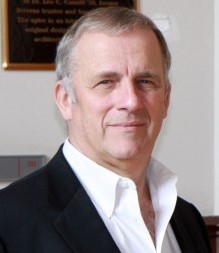 Dr. Joe Mitola, Fellow of the IEEE for Software-Defined and Cognitive Radio is Chief Technologist, ENSCO Aerospace Sciences and Engineering Division, Cocoa Beach, Florida, and serves as Chief Cyber Architect supporting a DoD organization.
Dr. Joe Mitola, Fellow of the IEEE for Software-Defined and Cognitive Radio is Chief Technologist, ENSCO Aerospace Sciences and Engineering Division, Cocoa Beach, Florida, and serves as Chief Cyber Architect supporting a DoD organization.



